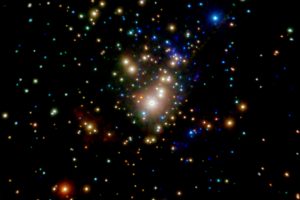Star formation and X-rays. Published by MNRAS the study: “Röntgen spheres around active stars” of D. Locci (OAPA/UNIPA)

“Stars form from the gravitational contraction of molecular clouds”: This is the basic concept of star formation process. However, the reality is much more complicated than this. The process that cause large (typically tens of light years) and cold (few degrees K) clouds of gas and dust to collapse into stars consists in a complex interplay between gravity, gas turbulence, the interaction between pre-stellar cores, the influence of the local magnetic field, significant mass loss from the protostars, supernovae explosions, and the local UV and X-ray radiation field.
The study “Röntgen spheres around active stars” led by the Ph.D. student Daniele Locci of the University of Palermo and the Astronomical Observatory of Palermo, recently published by MNRAS, explores the feedback by the local X-ray radiation field on the star formation process. X-rays, together with the UV radiation, can in fact affect seriously the star formation process in a cloud, rising its ionization level and temperature.
This study also identifies the typical star-forming environment where X-rays dominate the ionization of the cloud over the local UV field and cosmic rays: intermediately massive young clusters with a few massive stars and a large population of low-mass young stars, which are typically intense X-ray emitters (the prototype is the Orion Nebula Cluster). In more massive star forming regions (such as Cygnus OB2), in fact, the X-ray field produced by low-mass stars is overwhelmed by the UV radiation field created by their typical large population of massive stars, which are source of intense UV radiation.
In the figure (link) a X-ray image of the Trapezium in Orion, where most of the young stars are observed in X-rays, obtained from the Chandra Orion Ultradeep Project.
